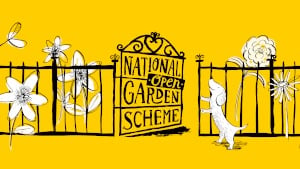About The Priest House
The Priest House sits on the western edge of Ashdown Forest in the historic and picturesque Wealden village of West Hoathly. A timber-framed hall house built in the 15th century for the Priory of St. Pancras in Lewes, the property was seized by Henry VIII in 1538 and belonged in turn to Thomas Cromwell, Anne of Cleves, Mary I and Elizabeth I. Central chimneys and a fine Horsham stone roof were added in the 16th century to create a substantial yeoman farmer’s house. The House was opened as a museum in 1908 by Charlotte and John Godwin King and contains a varied collection of 17th and 18th century country furniture, ironwork, textiles and other domestic bygones, displayed in furnished rooms. Temporary exhibitions also take place throughout the season. Charlotte and John Godwin King were neighbours of William Robinson of Gravetye Manor, and friends of Gertrude Jekyll (who included photographs of the house in her 1925 book ‘Old English Household Life’), and the small cottage garden was first established in 1908, on the fertile acid Wealden clay, following their design philosophies. The garden is still influenced by Robinson’s concept of the “wild garden” with mixed perennials, shrubs and herbs in densely planted, exuberant borders with structural elements provided by long-established yew topiary and espalier apple trees. In 2022 the herbaceous borders were substantially replanted following the removal of box hedges that were badly damaged by blight. A large collection of culinary, medicinal and ritual herbs can be found throughout the garden and in a small formal garden to the south of the house. A traditional fernery and stumpery and a small, secluded shrubbery and gravel garden have also been added at the back of the house in recent years to complete the picture.
Website:
https://www.sussexpast.co.uk
.jpg)
.jpg)
.jpg)
.jpg)
.jpg)
.jpg)
.jpg)
.jpg)
.jpg)
.jpg)
.jpg)
.jpg)
.jpg)
.jpg)
.jpg)
.jpg)
.jpg)
.jpg)


.jpg)
.jpg)
.jpg)
.jpg)
.jpg)

.jpg)
.jpg)